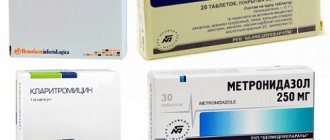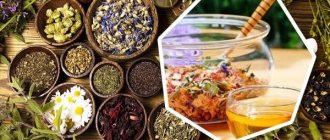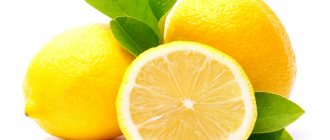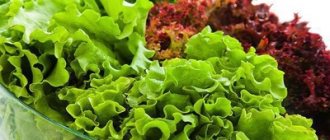Treatment of gastritis is a complex and lengthy process that requires compliance with all doctor’s recommendations. Very often, in addition to medications, treatment with folk remedies is prescribed.
Diseases of the gastrointestinal tract are subject to complex treatment. In addition to medications and diet, gastroenterologists tend to prescribe herbal-based folk remedies. Millions of people around the world suffer from inflammation of the gastric mucosa. Treatment of the main digestive organ is successful if the diet is followed. Natural preparations enhance the results. One of the popular remedies is gastric collection for gastritis.
The most common are herbal complexes, which have a therapeutic effect for problems in the gastrointestinal tract. There are several variations, but the best is considered to be gastric collection No. 3 for gastritis with high acidity. The herbal mixture relieves the patient of severe symptoms of the disease and promotes a speedy recovery (transition to the remission stage).
Characteristic
Stomach collection is a complex of medicinal herbs that have anti-inflammatory, healing effects on the walls of the affected organ. They contain useful microelements, vitamins, and other vital substances. There are several varieties of folk remedies, differing in the types of plants in the composition of the drug.
The main characteristics of the gastric set help treat various forms of gastritis. The functional features of the constituent elements include:
- acceleration of wound healing;
- suppression of fermentation;
- restoration of the working process of the stomach and intestines;
- suppression of gas formation.
There are main types of gastric mixtures: 1, 2, 3. The composition of the complexes differs markedly in the herbs included in it. The pharmacological properties of herbal medicines are determined by the properties of plant components. Another point is individual herbs.
Chamomile, which has powerful restorative functions, is relevant for gastritis of any form or type. The flowers of the plant are consumed independently, brewed, or additional herbs are added to increase the properties.
Herbal kits for a remedy can be assembled independently, based on the constituent elements, in consultation with a gastroenterologist. Many plants have a wide distribution. However, the most popular type is the pharmacy version. The shelf life of dry leaves is about two years.
Forecast of therapy using fees
With proper treatment with plant mixtures, the recovery process is favorable. Depending on the causes and symptoms of the disease, herbs will help cure gastritis, which is caused by the bacteria Helcyobacter pylori. These microorganisms can lead to stomach ulcers.
Herbal medicine eliminates inflammation of the mucous membrane during gastritis after drinking alcohol. If you have been diagnosed with inflammation of the stomach, then urgent help is needed. For treatment to have a positive effect, you should follow your doctor's recommendations. The disease can develop into serious complications.
Treatment with medicinal plants is used as additional therapy. Herbs consolidate the effect of medications, physiotherapy and therapeutic diet. The general effect of herbal remedies is considered to be the relief of discomfort. In most cases, plants are used in preventive measures to prevent gastritis.
We recommend: Can you eat boiled beets if you have gastritis?
Components
The third variation of the collection includes the roots of valerian and calamus. Nettle leaves, buckthorn bark and peppermint must be added there. Compared to the other two complexes, this is the smallest set of herbs. The packaging will indicate the composition and indications for use. Thus, the collection is used as a mild laxative and in the form of a medicinal decoction in the treatment of gastrointestinal spasms.
The main advantages of using herbs are considered to be a large range of healing properties. For example, they can relieve a patient from severe symptoms of gastritis in the form of heartburn and belching, and also contribute to the rapid healing of wounds in inflamed areas of the gastric mucosa. In addition, their action is aimed at eliminating the fermentation process. The collection normalizes the normal functioning of the intestines and stomach.
It is impossible to successfully cure a patient from the acute stage of development of the disease using this method alone, so a full course of treatment is needed. This collection can be perfectly combined with a complex of other chemical medicines without activating side effects or suppressing the properties of other drugs.
Comparing the previous two options, you can see a significant difference in the effect of these comprehensive fees. The first only relieves spasm, inflammation and stops bleeding. The second option has a large number of useful functions:
- Reducing the level of excessive production of gastric juice;
- Normalization of the digestive process;
- Calming and analgesic properties;
- Beneficial substances envelop the mucous membrane and normalize acidity;
- Active healing of erosions, wounds and inflammatory foci.
The third collection also relieves pain and eliminates foci of inflammatory processes on the gastric mucosa, but its difference is its laxative effect on the body and choleretic function.
Celery
This plant is indicated by herbalists, healers and physicians in the treatment of chronic and acute gastritis. Celery is good at relieving aggravation of the disease, which is accompanied by low acidity. Treatment of gastritis with herbs is gentler and safer than with medications. Celery contains beneficial substances and oils that:
- relieve pain;
- envelop the inflamed mucous membrane and relieve irritation;
- heal stomach erosion.
Celery should be prepared as follows:
- Grind the root in a blender;
- pour 0.5 liters of water;
- bring to a boil and leave for 2 hours.
Take the decoction twice a day, two tablespoons. The plant stimulates the functioning of the digestive system and the synthesis of secretions from the food ducts.
For what diseases is gastric collection prescribed?
There are a number of diseases in which such a collection can have a positive effect. So these include:
- Inflammatory diseases of the gallbladder, as well as bile ducts;
- Gallstones;
- Biliary or intestinal colic;
- Flatulence;
- Constipation;
- Irritable bowel syndrome;
- Biliary dyskinesia;
- Pain in the stomach;
- Functional changes in the functioning of the biliary tract occurring after surgery.
Very often, gastric collection No. 1 is attributed precisely during gastritis.
This method of treatment quickly has a positive effect due to the complex of medicinal plants. However, this remedy should be taken only at the initial stage of the disease; if a person has an advanced phase, then collection No. 2 is suitable for him, which is taken if the patient has low acidity, or collection No. 3 - for high acidity.
Contraindications
Often the herbs that are used to treat gastritis are poisonous. Therefore, in no case should you self-medicate and increase the dosage.
Sometimes side effects can be caused by the patient's individual intolerance. In these cases, you should stop taking this herbal remedy.
Also, herbs cannot be used independently in the treatment of gastritis during pregnancy, the presence of concomitant gastrointestinal diseases, acute pain and dyspeptic syndrome, if the health condition has worsened.
Video on the topic:
Healing properties of herbs
The healing properties of herbal infusions include:
- accelerated wound healing;
- suppression of the fermentation process;
- normalizing the functioning of organs such as the stomach and intestines;
- elimination of belching and heartburn.
It should be noted that such medications can be taken in combination, that is, together with chemical medications, as well as independently.
If we talk about the medicinal properties of each of the collections separately, then gastric collection No. 1 has the following properties:
- hemostatic;
- anti-inflammatory;
- eliminating spasms.
If we talk about collection No. 2, then its healing properties include:
- enveloping;
- hepatoprotective;
- antispasmodic;
- sedative;
- anti-inflammatory.
This should also include a decrease in hypersecretion, normalization of acid formation in the stomach, healing of erosive and ulcerative pathologies, improvement of the digestive process, and enveloping properties.
Gastric collection No. 3 has the following actions:
- choleretic;
- anti-inflammatory;
- antispasmodic;
- laxative.
Selected herbs and their properties
An accessible well-known plant used in the treatment of gastritis at home is called dill.
Dill
A medicinal plant known to everyone, it helps in the treatment of gastritis with high acidity. The composition includes biologically active substances that have a wound-healing and soothing effect on the stomach. With hyperacid gastritis, dill soothes pain, eliminates flatulence, bloating, belching, and heartburn. Helps remove waste and toxins from the patient’s body, increases the absorption of nutrients in the stomach and small intestine.
To treat gastritis with high acidity, fresh plant herbs and seeds are used. A decoction of the seeds has a therapeutic effect for flatulence or bloating. It is possible to treat gastritis and gastric ulcers. However, taking dill is ineffective for atrophic gastritis with low acidity of gastric juice.
St. John's wort
St. John's wort for gastritis has anti-inflammatory, antispasmodic and wound-healing effects. It is permissible to take it in the form of a pure decoction, as part of a collection. Thyme has similar properties for gastritis.
Motherwort
Motherwort is a medicinal plant that has a mild calming and sedative effect, which makes it possible to relieve spasms of smooth muscles, normalize blood pressure and the patient’s sleep. Motherwort is indicated for stress-associated gastritis and ulcers. Hawthorn has similar effects.
Treatment of gastritis with herbs is carried out under the supervision of the attending gastroenterologist or herbalist. Herbal medicine is especially effective in the subacute period and in the rehabilitation of the patient. At the same time, an adequate diet and nutrition regimen should be maintained.
Herbal teas for gastritis with high acidity
For every pathological process occurring in the human body, there is a certain complex of medicinal plants that help cope with the disease.
Since gastritis is an inflammatory process that forms in the mucous membrane, treatment will be based on eliminating inflammation, therefore, those herbs that have an anti-inflammatory effect, as well as an enveloping one, should be used.
Based on this, we can highlight a list of plants that cope with gastritis with high acidity - chamomile, calendula, dandelion, burdock roots, coltsfoot, plantain and St. John's wort.
In addition, there are special mixtures of herbs that help with the indicated pathology:
- Three tablespoons of dried herbs St. John's wort, chamomile and yarrow are combined with one tablespoon of celandine. Mix the ingredients to a homogeneous powder, measure one tablespoon from the resulting mass and pour a cup of boiling water. Let it brew for half an hour, after this time the infusion is filtered and drunk a third of a glass three times a day fifteen minutes before the main meal.
- To two tablespoons of centaury and two tablespoons of peppermint, add one tablespoon of St. John's wort, chop and mix thoroughly. Take one tablespoon of the resulting mixture and pour a cup of boiling water, leave the infusion for an hour, then filter and consume one hundred and fifty milliliters daily three times thirty minutes before meals.
- Similar manipulations can be performed with a number of herbs indicated above, taking them in a one to one ratio. The preparation method and method of consumption will be identical to previous recipes.
In addition, there are specialized collections that are aimed at suppressing gastritis with high acidity - this is collection No. 1, collection No. 2, collection No. 3 and No. 4 against the form of gastritis with an increased acidity level.
The presented mixtures can be purchased at a pharmacy or made yourself, but for this you need to have a kitchen scale to accurately measure the required herb. Since each mixture of herbs under a certain number has an individual list of constituent substances, only a doctor can prescribe the necessary collection.
Herbs for gastritis work wonders: sustainable remission of the disease when treated with plants
You can use herbs for gastritis in almost any case, even if it is an atrophic form of the disease. Plants usually have several effects at once, which allows you to combine different types in collections.
But any herb must be discussed with a doctor before use, fit correctly into drug therapy and not contradict it.
It is useful to use folk remedies to prevent diseases. And in any case, it is necessary to take into account parallel pathologies, such as pancreatitis, cholecystitis, cholelithiasis or ulcers (they are often associated with stomach inflammation).
You can choose a herbal medicine together with your doctor, based on different parameters of the disease: the type of damage to the gastric mucosa, the presence of concomitant pathologies (pancreatitis, ulcers), acute symptoms. Choosing a medicine based on the form of gastritis is one of the key areas.
Atrophic gastritis greatly affects the activity of the gastric glands and often leads to the formation of erosions and then ulcers. It is best to use a mixture based on:
- St. John's wort;
- calendula;
- shepherd's purse.
A classic recipe can combine 1 part of each of these plants. Together they will relieve inflammation and protect the delicate lining of the stomach.
Chemical, drug, or drug gastritis is a condition that requires the removal of harmful substances and protection of the mucous membrane. Herbal medicine in this case may include the following herbs:
- ginseng;
- calamus;
- Kalanchoe;
- aloe;
- shepherd's purse;
- a real bedstraw.
Each herb has a unique protective effect. It is best to use them together.
A severe form of chronic gastritis is accompanied by increased activity of immune cells in relation to the mucous membrane. In this case, the disease can occur in combination with pancreatitis, in a diffuse or focal form.
To combat autoimmune processes, very powerful herbs are needed, but they cannot be the only means of treatment: celandine, elecampane, poisonous fighter.
The plants are poisonous and can be used in microscopic doses. They cannot be used for drug-induced gastritis.
Hyperacid gastritis, or pathology with high acidity, can have different forms of damage to the mucous membrane. One of the main goals of therapy is to relieve inflammation, as well as suppress the production of hydrochloric acid, which affects the stomach.
The disease can be cured and brought into stable remission using the following herbs:
- Chamomile. One of the best anti-inflammatory drugs recommended for atrophic, catarrhal and other types of gastritis. The composition includes antibacterial substances, so it can be used for therapy when infected with Helicobacter pylori.
- Sage. The herb has a complex effect and is recommended for the treatment of bacterial gastritis.
- Calendula. Contains many useful substances that relieve inflammation and spasms. The herb stimulates the regeneration of inflamed areas, restores the immune system, and disinfects the stomach.
- St. John's wort. Kills bacteria, fungi, relieves spasms, restores damaged mucous membranes and envelops.
- Celandine. Anesthetizes and relieves inflammation caused by hydrochloric acid. Most often used as part of fees. The substance can be toxic in large doses!
- Sagebrush. Stimulates the removal of microorganisms, fights inflammation and restores mucous membranes.
- Nettle. Normalizes acidity levels and strengthens the immune system.
- Yarrow. Relieves spasms, has a choleretic and bactericidal effect, can be used for gastritis with pancreatitis. In case of high acidity, it reduces juice production well.
- Burdock. It also has anti-inflammatory properties and an antibacterial effect, removes harmful substances and tones.
All these medicinal herbs can be found in most herbs and teas for gastritis with high acidity.
Acidity in this type of disease is reduced, so the goal of treating the disease is to restore its level and protect the stomach from the action of pathogenic flora. This works great:
- Plantain. Stimulates acid production and heals damaged membranes.
- Celery. It has the same effect as plantain, and also kills bacteria and restores immunity.
- Aloe. Heals damaged tissue, relieves pain, helps with inflammation and removes many intestinal disorders.
- Sorrel. Increases acidity, removes inflammation and pain, removes harmful substances and replenishes vitamin levels.
- Mint. Relieves spasms and inflammation, increases acidity, normalizes blood pressure and emotional state.
- Lingonberry leaves. They kill bacteria stronger than most other herbs, stimulate stomach restoration, and strengthen the nervous system.
- Dandelion roots. Improves acid production, works well for patients who are also diagnosed with diabetes.
- Swamp calamus root. Useful for gastritis with low acidity, normalizes appetite and protects against eating disorders.
- Gentian. This unique plant stimulates the production of gastric juice and gland activity, while inhibiting inflammation and saturating it with beneficial microelements.
- Rose hip. Charges the body with vitamins and greatly increases the production of gastric juice.
It is not advisable to use these herbs if catarrhal, atrophic or other type of gastritis with strong acid production is diagnosed.
Chronic gastritis is often accompanied by periods of exacerbations. At this time, medicinal herbs and mixtures selected taking into account the most unpleasant symptoms will help.
Herbal remedies that relieve inflammation are especially effective in the treatment of gastritis with high acidity. After all, atrophic, catarrhal, erosive types of pathology are often accompanied by the appearance of ulcers and require emergency relief of symptoms. The most effective herbs:
- sage, medicinal clover;
- blue cornflower;
- horsetail;
- chamomile, coltsfoot;
- thyme;
- alder fruit;
- linden, licorice, calendula;
- fireweed, thyme;
- Kalanchoe, golden mustache (house plants).
From herbs you can make various mixtures in proportions of 1 to 1 or 2 to 1.
In chronic gastritis, the issue of protecting the weakened and damaged membrane is acute. If such treatment measures are not taken, an ulcer may appear over time. Herbal preparations based on:
- ordinary flax seeds - they can be brewed as an independent remedy;
- sea buckthorn oil – also taken as a separate medicine;
- wild mallow, medicinal marshmallow, medicinal lungwort;
- plantain, oat grains;
- angelica and Kalanchoe juice.
It should be noted that oat grains and plantain are the best means for protecting the mucous membrane in case of gastritis with a low level of acidity.
Many patients who have chronic atrophic or other gastritis suffer from poor appetite during exacerbations. The following will help them cope with the unpleasant condition: wormwood, gentian, milk thistle, plantain and medicinal dandelion.
They should not be taken as primary medications, but as part of a medicinal herbal mixture they will be very effective.
Which fee to choose
You can buy three types of gastric preparations at the pharmacy. They have different compositions of herbs and are used to treat various diseases of the gastrointestinal tract. Herbal collection No. 1 for gastritis has pronounced antispasmodic and anti-inflammatory properties.
It is an effective remedy for any form of the disease at any stage of neglect. It contains the following main herbal components:
- Flowers of chamomile, immortelle, calendula.
- Calamus root.
- Peppermint, nettle, plantain and Ivan tea leaves.
- Herb knotweed, St. John's wort, yarrow, horsetail.
- Dill seeds.
Herbal collection No. 1 is especially useful for erosive gastritis.
Herbal collection No. 2 for gastritis has a pronounced healing effect due to its ability to normalize the production of hydrochloric acid, which minimizes the irritant factor on the inflamed walls of the stomach. The main components of gastric herbal mixture No. 2 are the following plants:
- Dill and flax seeds.
- Calamus root, elecampane.
- Strawberry and wormwood leaves.
- Melissa and motherwort herbs.
- Dog-rose fruit.
Herbal collection No. 2, due to the presence of components with a sedative effect, is especially effective for exacerbation of gastritis, which was triggered by stress. In addition, it is prescribed for ulcers.
Gastric collection 3 for gastritis has a wider spectrum of action. It is able to quickly relieve pain and has a calming effect. It contains the following plants:
- Peppermint and nettle leaves.
- St. John's wort herb.
- Calamus and valerian root.
Herbal collection No. 3 is prescribed for the treatment of any form of gastritis. It has a choleretic and mild laxative effect, which reduces the load on the digestive system as a whole.
Very often, doctors recommend preparing herbal mixtures for gastritis yourself. By choosing the right plants, you can significantly enhance the effect of medicines.
Gastric collection No. 1
The first herbal mixture for gastritis has antispasmodic, anti-inflammatory and hemostatic properties. A folk remedy is used at different stages of inflammation of the gastric mucosa.
The composition of the drug is replete with the following components:
- flowers of chamomile, calendula, immortelle, corn;
- root part of calamus;
- blooming Sally;
- peppermint;
- herbs knotweed, plantain, St. John's wort, horsetail, yarrow;
- nettle;
- dill fruits.
The restorative and hemostatic functions of the set are relevant in the treatment of erosive gastritis and peptic ulcer.
A tablespoon of the mixture is poured with half a liter of boiling water. Leave for three hours, drink 10-15 ml before meals.
Gastric collection No. 2
The rich set has a second complex. The rich composition has a beneficial effect on stomach diseases. The herbs included in the mixture regulate the secretion of acid and have healing and antispasmodic functions.
The basis of the gastric collection consists of:
- flaxseeds, dill seeds;
- calamus root, valerian, elecampane, licorice;
- herbs lemon balm, motherwort, wormwood;
- strawberry leaves;
- rose hip.
The components of the drug (valerian, motherwort and others) have a sedative effect. The effectiveness of the sedative second gastric collection for the treatment of gastritis helps fight the disease caused by stress.
Take half a liter of boiling water for two large spoons of the mixture. The liquid is infused for three hours and filtered. Take 250 ml of the product before meals.
Gastric collection No. 3
The third herbal remedy is more different from its predecessors. The action of gastric collection has a wider spectrum. The natural drug has a choleretic, laxative effect, eliminates inflammation, and reduces pain.
The components of the collection are as follows:
- nettle leaves;
- valerian roots, calamus;
- peppermint.
The mixture is poured with water (a glass per tablespoon), kept for half an hour over a water bath. Then the liquid is infused for more than forty minutes. It is recommended to take choleretic collection for the treatment of gastritis 100-150 ml twice a day.
Application for the gastrointestinal tract of collection No. 4
Almost all herbal remedies are aimed at normalizing digestive activity. Collection for the stomach number four is intended to ensure that the process of assimilation of the food received occurs to a better extent.
The components that make up this gastric collection have a gentle effect on the inner walls of the stomach and therefore do not irritate the sensitive mucous membrane.
The following herbs and plants form the collection:
- mint;
- fruit part of cumin;
- valerian rhizomes;
- fruit part of fennel.
To prepare the infusion, measure out one tablespoon of the mixture and pour a cup of boiling water, cover and stand for twenty to thirty minutes. Then you need to strain the resulting liquid and leave to cool to room temperature. A third of a glass should be consumed fifteen minutes before the main meal three times a day. The duration of treatment will be determined by the attending physician, based on the degree of neglect of the initial process and the effect of the herbal infusion on the body.
Gastrointestinal collection "Fitogastrol"
Problems caused by disturbances in the gastrointestinal tract cause discomfort and a lot of trouble. The most common manifestations are flatulence, bloating, pain and a feeling of heaviness, flatulence, and constipation.
Such problems not only bring unpleasant sensations, but can even derail your plans. In order to get rid of such ailments, drug treatment is prescribed, but another method is also being popularized - treatment with herbal teas, among which Fitogastrol occupies the main positions. The drug contains five medicinal herbs that have a beneficial effect on the functioning of the intestines, relieve spasms, and have anti-inflammatory and antimicrobial effects.
The crushed mixture of herbs is placed in bags similar to ordinary tea bags. One such package must be placed in a glass bowl or dish coated with enamel, poured over a mug of boiling water, covered with a lid, plate or thick towel and allowed to stand for fifteen minutes. After the time has passed, the bag of herbs is removed, and the remaining volume of the infusion is added to the two hundred milliliter mark using boiled water. Take half a glass three times a day, half an hour before meals.
There is another form of release of the designated collection, in this case there are no bags, but there is a total mass of powdered herbs. Then you should measure out one tablespoon of the mixture, put it in a similar bowl as in the previous case and add a mug of hot water, but not boiling water. Cover and heat further in a water bath for fifteen minutes so that some of the broth evaporates.
Then you need to let the infusion cool to room temperature. Then you should filter the liquid and add boiled water to the resulting volume to the two hundred milliliter mark. Take one third of a mug three times a day, half an hour before meals.
Due to the fact that the “Fitogastrol” collection is a complex of medicinal herbs that have different effects on the body and can be perceived differently individually, you should consult a specialist before use.
Allowed herbs
Let's figure out what herbs to drink for gastritis to improve your condition. You can collect raw materials for preparing herbal medicines yourself, but in this case you need to know at what time to do this, how to dry and store them. It is much easier to carry out herbal treatment for gastritis if you purchase raw materials in pharmacies.
Advice! In pharmacies you can purchase both individual types of herbs and various mixtures. It is better to buy grass in bulk boxes; this raw material option is more effective than herbs sold packaged in filter bags.
A gastroenterologist will tell you which herbs are the most effective for treating gastritis, since stomach disease occurs in different forms and it is impossible to give general recommendations suitable for all patients. Decoctions and infusions are prepared from herbs according to the instructions on the package.
Prepared medications should be consumed immediately after use; they should not be prepared for future use. Drink the decoctions warm; hot or cold drinks from the refrigerator are contraindicated for gastritis. Let's figure out what herbs should be used to treat gastritis of various forms.
Yarrow
Yarrow is used for gastritis in any type of disease. Yarrow decoction helps with high and low acidity, as well as with an unchanged level of secretion. Preparations prepared from this herb have pronounced anti-inflammatory properties. They also drink yarrow decoctions for peptic ulcers.
Advice! But before you start treatment with yarrow or any other herb, you need to consult a specialist, as there are contraindications. Thus, yarrow is strictly prohibited for women during pregnancy and lactation.
How to take yarrow preparations? It is recommended to use the following recipe:
- put one tablespoon of dry raw materials in a glass;
- add boiling water to the top level of the glass;
- cover the glass with a saucer and leave to brew;
- strain after 1.5 hours;
- take 75 ml before each meal.
Yarrow is often included in preparations that are used to treat stomach diseases. This remedy helps not only relieve inflammation, but also normalize (increase or decrease) the level of secretion in gastritis of various forms.
St. John's wort
St. John's wort is excellent for gastritis. Preparations from this plant are extremely useful, they:
- relieve inflammation;
- help fight Helicobacter pylori infection;
- restore healthy microflora.
Advice! St. John's wort is one of the most powerful natural antiseptics; it is excellent for improving the digestive system.
In addition, St. John's wort tea perfectly improves immunity, so this drug is especially useful for diseases of the gastrointestinal tract of an infectious nature. Prepare tea at the rate of 1 dessert spoon of dry herb per glass of boiling water. You need to drink a glass of tea three times a day.
Celandine
Celandine can be used to treat the chronic atrophic form, as well as to get rid of peptic ulcers. In addition, preparations based on celandine help prevent the development of malignant tumors. The grass is used separately or as part of collections.
You can prepare an infusion at the rate of half a tablespoon of dry raw materials per glass of boiling water. An effective medicine is a mixture of celandine juice with garlic juice and honey in a ratio of 1: 1: 4.
In addition, you can add 2 parts butter to the mixture. However, the mixture for gastritis can be used with extreme caution; it is better to first consult with a specialist.
How to brew
To properly brew the herbal mixture, you should first read the instructions for its use. It is usually printed on the packaging. If you prepare a mixture of herbs yourself, then you should use standard brewing methods that allow you to preserve all the beneficial properties.
Very often, herbal infusions are used to prevent disease. They are recommended for use in the autumn and spring, when the risks of seasonal exacerbations increase. The herbal mixture is poured with boiling water and cooked in a steam bath for a quarter of an hour.
As a rule, the dosage is 4 tablespoons of the resulting herbal mixture per liter of water. After this, leave the broth for twenty minutes. The slightly cooled product is filtered and stored in a cool place in a jar with a closed lid. This method of brewing allows you to prepare an effective remedy for the prevention of disease.
Herbal infusions
Each medicinal plant has unique properties for gastritis and stomach ulcers. To enhance the therapeutic effect, traditional medicine and traditional herbal medicine recommend using specially formulated herbal infusions. In a thoughtful combination, medicinal herbs for gastritis can complement each other’s therapeutic effects, leading to rapid healing and significantly reducing the time of treatment and rehabilitation. Monastery tea is cited as a well-known and effective remedy. The collection includes St. John's wort, motherwort, hawthorn, lemon balm and a number of other herbs. Other ingredients include thyme, plantain, mint, etc.
Usually, to prepare a medicinal collection, take a tablespoon of each type of dry herb. The resulting mixture is poured with boiling water, infused and taken orally. You can add a spoonful of natural bee honey to the resulting herbal decoction. Infuse herbal mixtures from several hours to a day. It must be taken orally warm. The course of therapy takes several weeks and is repeated if necessary. Such herbal preparations, prepared at home, are great for speeding up the healing process.
Treatment of gastritis with gastric collection
The collection for the treatment of gastritis cannot be used as the main remedy for the treatment of gastritis. But at the same time, taking a gastric collection for gastritis can increase the effectiveness of treatment.
Simple herbal teas using chamomile and calendula flowers, mint leaves, dill or fennel seeds are widely used to normalize the digestion process. They are usually consumed after meals. Treating serious attacks with such decoctions is not effective.
With high acidity
Herbal collections for gastritis with high acidity should include plants that can reduce the concentration of hydrochloric acid. Thanks to decoctions of medicinal herbs, you can get rid of heartburn, increased flatulence, and bad breath. The most effective for this form of gastritis are the following plants:
- Chamomile and calendula flowers.
- Herb St. John's wort and yarrow.
- Dill and fennel seeds.
A collection for gastritis with high acidity can be prepared in different ways and from different components. An infusion made from chamomile, yarrow and St. John's wort, taken in equal proportions, has strong restorative properties.
Two large spoons of the herbal mixture are poured into half a liter of boiling water and infused in a thermos for 12 hours. The infusion should be drunk a third of a glass half an hour before meals.
It is allowed to treat gastritis with monotherapy in case of high acidity. In this case, chamomile flowers are used to prepare the decoction. To do this, pour a tablespoon of flowers into a glass of boiling water and leave in a thermos for 4 hours. The drink should be consumed half a glass twice a day after meals.
Low acidity
With gastritis with low acidity, gastric secretion decreases. This leads to disruption of the digestion process. The herbal collection in this case should include plants that increase the production of gastric juice.
First of all, herbal mixtures should contain wormwood, which is distinguished by its ability to stimulate the digestive system. This herb can be used as monotherapy. To prepare a decoction, pour a teaspoon of herbs into half a liter of boiling water and leave for 30 minutes.
It is recommended to take 50 ml of infusion half an hour before meals. The bitterness of the drink can be quenched with a small amount of honey. You can also use gastric collection with low acidity with another combination of plants:
- Yarrow and aloe.
- Mint and calendula.
- Wormwood and centaury.
- St. John's wort and caraway seeds.
Treatment of functional gastritis
Functional disorders are considered to be disorders of the stomach associated with psychogenic stress, severe physical or mental fatigue. Herbal medicine is included in a complex of therapeutic measures along with psychotherapeutic effects, physical therapy, physiotherapy, and proper organization of work and rest. With this comprehensive approach, patients respond quickly and effectively to treatment.
With the described forms of gastritis, exposure to plant materials will be required, leading to a decrease in the production of gastric juice. Treatment with a decoction of marshmallow and elecampane roots, flax seed, and St. John's wort flowers is effective. It is good to add lemon balm, mint, chamomile, and motherwort to the medicinal gastric collection 3.
Prepare the infusion:
- Flax seed – 20 grams.
- Valerian roots and rhizomes – 20 grams.
- Peppermint – 20 grams.
- Fennel fruits – 20 grams.
Boil the infusion, let it cool, strain and take it in fractional portions over a month and a half. Drink the decoction between meals.
If functional gastritis occurs with suppression of secretory functions, you can add plantain leaf to this decoction. It is permissible to brew plantain as an independent medicine.
If there is an increase in the motor function of the stomach, it is slightly reduced by regular intake of mint or lemon balm infusion.
Erosive
With erosive gastritis, erosions and ulcers occur on the mucous membrane. As a result, herbal preparations include plants that have pronounced healing properties. The most effective are infusions prepared from the following plants:
- Plantain.
- Flax seeds.
- Mallow.
Atrophic
With atrophic gastritis, serious changes occur in the tissues of the stomach, leading to a decrease in the digestive glands. This form of the disease is difficult to treat, so it is very important to take measures aimed at stabilizing the condition.
In this case, plantain is considered the best medicinal plant to combat the disease. It is on its basis that healing infusions need to be prepared. Other ingredients may include elecampane and calamus rhizomes. These plants can also be used in monotherapy.
An effective herbal mixture includes St. John's wort, shepherd's purse and calendula. You need to take a tablespoon of each plant and put it in a thermos. After this, the mixture is poured with a liter of boiling water and left for a day. Accepted according to a strict schedule for a month:
- One glass on an empty stomach in the morning.
- One glass one hour before lunch.
- Two glasses instead of dinner.
Features of herbal medicine at home
Herbal remedies for gastritis have specific purposes. It depends on the type of disease found in the patient. If inflammation of the stomach occurs with increased acidity, the main task is to eliminate the increased concentration of gastric juice.
Other main purposes of herbal remedies for gastritis are as follows:
- prevention of progression of the disease to complications;
- elimination of discomfort and pain;
- enriching the body with additional vitamins;
- strengthening the health of the whole body.
The distinctive task of herbs in the treatment of gastritis with low acidity is to stimulate the functioning of the glands. Herbal medicine for this type of disease helps prevent the transition from hypoacid pathology to cancer.
Before using herbal remedies, the patient should consult a specialist. Depending on the form and type of the disease, the doctor will recommend what herbs you can drink for gastritis. The use of medicinal plants should be carried out with knowledge of their positive and negative properties.
To reduce autoimmune aggression and relieve oppressive pain, elecampane, celandine, and poisonous fighter will help. Some of these plants are classified as dangerous herbs. They are used in small quantities so as not to worsen the health condition.
If a patient needs preparations with an anti-inflammatory effect, it is recommended to use:
- alder fruit;
- cornflower;
- sage;
- coltsfoot;
- fireweed;
- Colgan;
- calendula.
Plants that are used against stomach inflammation can be poisonous. In some cases, the patient is advised to refrain from taking decoctions, infusions and tea, due to individual intolerance to the components. You need to know that when using mint tea, a person should not drive a car for several hours. The plant has sedative properties and a hypnotic effect.
If an overdose or poisoning of the plant occurs, then signs of nausea, vomiting, general malaise and kidney damage occur. Herbal infusions are not recommended for people who suffer from acute pain and dyspeptic syndrome. Herbal medicine is contraindicated if the diagnosis of gastritis is inaccurate or if other gastrointestinal diseases are detected.
Herbs should be used with caution in the following cases:
- during self-medication;
- if your health condition worsens.
With proper treatment with plant mixtures, the recovery process is favorable. Depending on the causes and symptoms of the disease, herbs will help cure gastritis, which is caused by the bacteria Helcyobacter pylori. These microorganisms can lead to stomach ulcers.
Herbal medicine eliminates inflammation of the mucous membrane during gastritis after drinking alcohol. If you have been diagnosed with inflammation of the stomach, then urgent help is needed. For treatment to have a positive effect, you should follow your doctor's recommendations. The disease can develop into serious complications.
Treatment with medicinal plants is used as additional therapy. Herbs consolidate the effect of medications, physiotherapy and therapeutic diet. The general effect of herbal remedies is considered to be the relief of discomfort. In most cases, plants are used in preventive measures to prevent gastritis.
In traditional medicine, herbal medicine has often been used for stomach inflammation. Herbal medicine is prescribed in combination with medications, diet and physiotherapy. There are many folk recipes, and decoctions, infusions or tea are prepared from plants.
Plants for the treatment of gastritis with increased secretion are selected depending on the properties they possess. Effective herbs for reducing the acidity of gastric juice are sage, gentian root, mint and cinnamon.
A decoction is made from the collection of these plants. Each component is taken in equal parts. To prepare 250 ml of drink, you will need 1 tsp. collection The plants are brewed with boiling water and infused. The course of treatment is 14 days. You need to take 1 glass in the morning and evening.
Mint can be used separately from the collection. It is taken for inflammation of the gastric mucosa with increased secretion. The patient is recommended to prepare tea with mint.
To do this, you will need dried leaves of the plant. Otherwise, the raw materials are purchased at the pharmacy. To prepare tea, you will need crushed mint leaves (1 tsp) and brew with boiling water (250 ml).
Cool the product before use. Tea is taken in the morning and evening, 100 ml. Before going to bed, it is recommended to add 1 tsp of butter and honey to the drink.
Peppermint is also used for diseases of the pancreas - pancreatitis.
For inflammation of the stomach with high acidity, St. John's wort is used. The plant helps in eliminating inflammation due to Helicobacter pylori bacteria. Tea is prepared from the medicine. For this you will need 1 tsp.
dried and crushed St. John's wort. The raw materials are brewed with 250 ml of boiling water. The tea needs to steep and cool. Drink St. John's wort drink 3 times a day after meals. The plant can be consumed with mint or fireweed.
Recipes and herbs for the treatment of hypoacid inflammation of the stomach differ from herbal medicine with increased secretion. Tree aloe is considered a useful plant. Juice is made from it with the addition of honey.
To prepare this remedy, you will need a plant that is at least 3 years old. Only aloe leaves are used for juice. They are placed in the refrigerator for 14 days. After time, the leaves are twisted through a meat grinder or the juice is extracted by hand. You should get 150 ml of product. Add 250 g of honey to the pulp and stir.
The mixture is infused for 5 days in a cool and dark place. A remedy for the treatment of gastritis with low acidity is taken in the first week, 1 tsp. before meals. After 7 days, drink aloe juice with honey, 1 tbsp. l. The course of treatment is 45 days.
The most effective plant against atrophic type gastritis is considered to be celandine. The herb also helps in the chronic form of the disease. The plant is used in the treatment of peptic ulcers. Celandine helps in the fight against cancer and protects the gastric mucosa from tumors. Most people with gastrointestinal problems drink tea from this plant.
To prepare the drink you will need to pour ½ tbsp. l. dried and crushed celandine with boiling water. Take half a glass of tea in the morning, evening and afternoon after meals.
Celandine juice is taken in addition to crushed garlic. To make this product you will need to mix the components in equal quantities. Then add honey and bring to a homogeneous consistency with the remaining ingredients.
Doctors allow adding butter.
For gastritis with low acidity, wormwood tea is used. The plant has a bitter taste, and honey or sugar is added to eliminate it. To prepare the drink you will need dried wormwood (1 tsp). The plant is poured with boiling water (2 cups). Cover the container with the liquid with a lid and let it brew for 20 minutes.
For gastritis with low acidity, you should drink 50 ml of tea 30 minutes before meals. Treatment lasts 30 days. In addition to the drink from the plant, an alcoholic infusion is used. Take the product (4 drops), pre-diluted with water.
Traditional recipes help with exacerbation of gastritis, to get rid of unpleasant pain in the stomach. For this, caraway seeds, immortelle, sage and cinquefoil root are used. Any of the ingredients can be replaced with yarrow. This herb has equally effective properties for pain relief.
In case of exacerbation of gastritis, it is necessary to take the ingredients in the ratio 1:2:2:2. The collection of herbs is placed in a container and 1 liter of water is poured. Then the mixture is simmered over low heat for no more than 40 minutes. Afterwards, the broth is cooled and filtered through cheesecloth or a sieve. Pour the product into a glass jar and store in a dark place.
To eliminate stomach pain, you need to take the decoction for 7 days. Drink it half a glass in the morning before meals. The rest of the product is drunk throughout the day. Before use, the broth is heated and it is recommended to add honey or sugar.
To prepare, you will need to take an equal amount of the collection components to make 50 g. The mixture is placed in a container and 1.5 liters of boiling water is poured. The product continues to cook for 5 minutes. Then the liquid is cooled and filtered through cheesecloth. The decoction is taken throughout the day.
If a patient often experiences heartburn due to gastritis, then use a plant - fennel. To treat the disease and unpleasant symptoms, make an infusion of dill seeds.
To prepare the product, you need to grind the ingredient. The resulting powder in the amount of 1 tsp. pour 250 ml of boiling water. The product must be infused for 30 minutes.
Then the liquid is filtered and 80 ml is taken in the morning, evening and afternoon.
Chamomile decoction will help against stomach pain with gastritis of any type. The drink helps not only with gastrointestinal diseases, but also keeps the nervous system in good shape. The method of preparing the decoction is to brew the plant with boiling water. The product is allowed to brew for 30 minutes. Take every day 3 times a day before meals.
It is known that medicinal herbs for chronic and acute gastritis can bring both benefit and harm. They should be used with great caution in the herbal treatment of diseases of the digestive system. Before preparing any collection of plants, you must consult a doctor about its appropriateness in treating the disease.
Fact! Gastritis cannot be completely cured with medicinal plants. But herbs can be used as an adjuvant in complex therapy.
Healing herbs for chronic gastritis of the stomach go well with diet and medicinal pills. Herbal infusions and decoctions help eliminate symptoms and quickly relieve abdominal pain.
How to use and cook correctly
Each collection is not only used differently, but its method of preparation is also different.
This must be taken into account, since otherwise the treatment will not bring the long-awaited effect.
- In order to prepare collection No. 1, you need to take a tablespoon of this product and pour 500 ml of boiling water. after this, you should wait 3 hours until the broth is infused and you can take a tablespoon before each meal.
- To prepare medicinal collection No. 2, you should take 2 tablespoons of the specified mixture and also pour 500 ml of boiling water over it. Then the drink should steep for 3 hours, after which it is filtered and taken in a glass before meals.
- Preparation of collection No. 3 requires the use of a steam bath, in which one tablespoon of raw material is brewed, filled with 200 ml of cold water. The product should remain above the steam for at least 30 minutes. Then the decoction should infuse, for this 40 minutes is enough and it can be consumed 100 ml at a time. In total, you need to take this medicine twice a day.
In some cases, it is recommended to take a gastric collection in the form of an infusion:
- Take 1 g of the mixture in dry form and pour boiling water (200 ml). The product should not be infused for long; 20 minutes is enough.
- After this, the infusion should be filtered and consumed twice a day, half a glass. This infusion is recommended to be taken during or after meals. This course of treatment should last exactly 30 days, after which you need to take a break.
5 Effective herbs for atrophic gastritis
Burdock
When fresh, it is enough to take 5 - 6 small burdock leaves and rinse well. If we take dried, then it is enough to take 2 tbsp of well-chopped raw materials. Add burdock to a thermos and fill it with freshly boiled water. The composition should be infused for 2 – 3 hours. During this time, the medicine will also cool down to the desired temperature and can be used immediately. You need to take burdock decoction in the morning 40 minutes before meals, 2 tablespoons, before lunch and before dinner.
Nettle
Crushed leaves and stems of dried potion in the amount of 3 tbsp. pour a glass of hot water. Keep over a steam bath for about half an hour and then cool. Take a glass of medicinal infusion 2 times a day, morning and evening. Nettle-based medicine can be taken both before and after meals. For the best effect, the time of administration can be alternated.
Sage
Raw materials in the amount of 2 tbsp. pour a glass of boiling water and let it brew over low heat for 15 - 20 minutes. Then remove from heat and cool to room temperature. As a medicine, you need to drink half a glass of infusion before each meal. The finished composition should be stored in the refrigerator for no more than a day, after which a fresh portion is prepared.
Dill
Dried dill seeds are useful for atrophic gastritis. For 250 ml. boiling water, take a teaspoon of seeds and leave for 30 - 40 minutes. For 3–4 months, drink 100 g before each meal.
Such a long-term use of the medicinal composition from dill seeds is due to the fact that it is during this time that the infusion is able to completely eliminate unpleasant symptoms and normalize the patient’s condition.
Caraway
Cumin seeds have a wonderful effect on the gastrointestinal tract and alleviate the patient’s condition. The crushed raw materials can be added a pinch at a time to cooked food, or you can make a pleasant-tasting drink. To do this, a tablespoon of seeds is steamed into 500 ml. boiling water and leave for half an hour in a dark place. Drink a glass of freshly prepared infusion before meals every day for a month. You should take the medicine 2 times a day, ideally immediately after waking up and before going to bed.
Balanced nutrition for gastrointestinal problems
It is no secret that the correct approach to the food consumed is the key to the health of the whole body, but due to the fact that fast food chains have been actively developing recently and people suffer from an excess of “bad” food, diseases associated with gastrointestinal tract have become widespread. intestinal tract.
The food consumed must be balanced and not contain large amounts of harmful substances.
Naturally, a person cannot completely give up eating sugar, canned, smoked and other harmful foods, but still limiting their consumption significantly is a necessary condition for the normal functioning of the stomach. Since it is the consumption of harmful foods in large quantities that literally clogs the intestinal villi, thanks to which the absorption of nutrients from the food consumed occurs. Ultimately, the organs simply stop coping with their intended function.
Therefore, if you have problems with the gastrointestinal tract, you need to pay attention to soft foods (porridge, puree, puree soup), broths, vegetables and fruits, steamed dishes made from low-fat meat and fish. Also of great importance for stomach diseases is oatmeal, which is famous for the presence of mucous structures, thanks to which the intestinal lining is coated and cleansed of toxins.
What herbs are used to treat gastritis?
The following herbs can be used to treat gastritis: yarrow, wormwood, celery, aloe, fireweed, oats, rose hips, celandine, mint, sea buckthorn, St. John's wort, plantain, sorrel.
To reduce autoimmune aggression and relieve pain, celandine, elecampane, and wrestler can help. But some of these herbs are classified as poisonous plants, so they should be used with caution and according to the dosage.
But the final decision on taking certain herbal remedies depends on the attending physician.
Treatment of peptic ulcer
Most often, the formation of erosions and their subsequent transformation into an ulcer is associated with the activity of Helicobacter pylori infection. To effectively treat the mucous membrane, ensure healing of the ulcer and prevent the re-development of bacterial infection, you need to take the following herbal mixture after antibacterial therapy. You will need cinquefoil erecta and burnet, St. John's wort and shepherd's purse, chamomile and licorice, motherwort and Icelandic moss, fireweed and yellow egg capsule. Mix everything, pour 1 dessert spoon with 500 g of boiling water and leave overnight. Take 150 ml 3 times a day.
The condition of the ulcer must be monitored regularly, in accordance with the doctor’s recommendations. There are numerous reviews that with small erosive lesions of the mucous membrane it was possible to manage without drug therapy.
With low acidity
Hypoacid gastritis is characterized by decreased gastric secretion. The main symptoms of inflammation: metallic taste in the mouth, discomfort, heartburn, loss of appetite. The process of digestion of food is disrupted, the contents of the affected organ rot.
For gastritis with low acidity, the gastric mixture helps:
- increase the production of hydrochloric acid;
- eliminate pain syndrome;
- restore bowel dysfunction;
- normalize the condition.
Recipes for hypoacid gastritis
Stomach teas that help restore acidity include celery root, chamomile, plantain, and yarrow. Additionally, the consumption of rowan juice and white cabbage is encouraged.
Examples of recipes are as follows:
- A large spoonful of dried blackberry leaves is poured into a glass of water. Bring the mixture to a boil and cook for a minute. Remove the broth from the stove and let it brew for half an hour. Drink half a glass four times a day. You can add honey, milk;
- take five parts each of the herbs yarrow, dandelion, calendula, plantain. Add two parts mint. The resulting mixture (one tablespoon) is poured with a glass of boiling water and left for an hour. Drink the mixture three times a day, half an hour before meals. Dosage - 100 ml;
- the most pleasant way is blackcurrant juice. You should drink a quarter glass three times a day;
- St. John's wort flowers, dried blueberry and plantain leaves are taken in equal parts. Leave for an hour at the rate of one glass of boiling water - four large spoons. Take 15 ml three times daily.
We recommend: Therapeutic diet for reflux gastritis for every day
Action and composition
If you often begin to worry about belching and heartburn, pain in the sternum, constipation and bloating, then it’s time to see a doctor, and at the same time you can drink a stomach preparation. Our article will tell you which one to choose. The primary task of the complex is to normalize the secretion of hydrochloric acid. As a result, secretion decreases, and enough hydrochloric acid is produced to effectively break down the food entering the stomach, but no more.
In addition, the active components help improve digestive processes, coat the stomach and help relieve spasms. As already mentioned, the composition includes flaxseeds and lemon balm herb, motherwort and calamus roots, peony and solyanka herbs, and licorice roots. All herbs need to be chopped. To prepare the infusion, you will need 1 teaspoon of the mixture, pour boiling water over it and leave for 15 minutes. Drink a glass three times a day. By the way, the collection, already crushed and dosed for each dose, is sold in the Green Pharmacy network, which today has branches throughout Russia.
Dill and wormwood for gastritis
Herbal treatment for gastritis also involves the use of dill, which is an indispensable aid in eliminating this disease. It helps not only to reduce the intensity of the clinical picture of the disease, but also prevents the transition of gastritis to the erosive form.
Due to the fact that dill contains a large amount of vitamins and nutrients, it improves appetite, rids the body of toxins and helps get rid of increased gas formation.
Sagebrush
For such an ailment, regardless of increased or decreased secretion of hydrochloric acid, it is recommended to drink tea from this plant or drink a decoction based on dill seeds before meals.
Wormwood, in turn, has anti-inflammatory and wound-healing effects, which is why drinking medicinal drinks based on it is not prohibited. Teas and decoctions from such a plant can be prepared not only from the leaves, but also from wormwood powder. They must be drunk strictly before eating.
Antidiarrheal collection
It is used if the stomach disease is accompanied by regular disorders. Moreover, the collection can be kept at home as a way to treat one-time disorders after an error in nutrition. It is also suitable for long-term treatment. The collection consists of caraway fruits and valerian roots, mint leaves and fennel fruits. Everything must be taken in equal proportions. About 5 grams (1 tablespoon) are consumed per glass of boiling water. After this you can strain and cool. Reviews emphasize that this collection is a real lifesaver, especially when the toilet is inaccessible.











